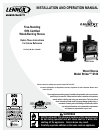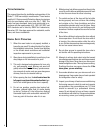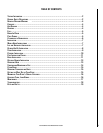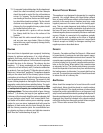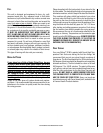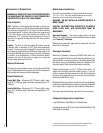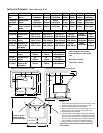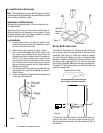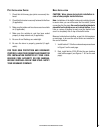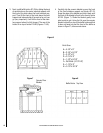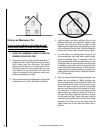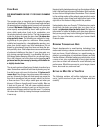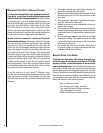
2
NOTE: DIAGRAMS & ILLUSTRATIONS ARE NOT TO SCALE.
TesTing informaTion
This manual describes the installation and operation of the
Striker™ S160 non-catalytic wood heaters. These heaters
meet the U.S. Environmental Protection Agency’s emissions
limits for wood heaters sold on or after July 1, 1990. This
heater has been developed, tested, and constructed in ac-
cordance with the requirements of UL 1482, ULC S627-and
HUD standards and is listed by OMNI Test Laboratories,
Beaverton, OR. It has been approved for residential, mobile
home, and alcove installations.
general safeTy PrecauTions
1. When this room heater is not properly installed, a
house fire may result. To reduce the risk of fire, follow
the installation instructions. Contact local building
or fire officials about restrictions and installation
inspection requirements in your area.
2. Wear gloves during installation to avoid injury from
sharp edges on the stove and/or its parts.
3. This unit is designed and engineered to burn only
dry, well-seasoned wood. Burning wet wood will
greatly reduce the Stove’s efficiency, produce exces-
sive amounts of smoke, and can cause dangerous
chimney fires due to creosote build-up.
4. Before opening the door, the
draft control must be
fully open to avoid possible combustion flash (igni-
tion of hot volatile gases as the door is opened).
5. Do not use gasoline, gasoline-type lantern fuel,
kerosene, charcoal lighter fluid, or similar liquids
to start or “freshen up” a fire in this stove. Keep all
flammable liquids and combustible materials 36”
from any point of the stove when it is in use.
6. While burning, fuel utilizes oxygen from the air in the
room. Be sure to allow an adequate amount of fresh
air into the room where the stove is burning.
7. The outside surface of the stove will be hot while
burning properly and can set items like clothing
and curtains on fire. Keep furnishings and other
combustible materials away from the stove. Using
the heat from the stove to dry wet clothing can be
hazardous if clothes are placed too near the surface
of the stove.
8. Do not allow children to play near the stove without
close supervision. Do not touch the stove while it
is burning. Use extreme caution while the unit is
in use. Surface temperatures become dangerously
hot and can cause serious burns.
9. Do not allow anyone to operate the stove who is
not familiar with the operating instructions.
10. Attempts to achieve heat output rates that exceed
stove design specifications can result in permanent
damage to the stove. Never leave your stove unat-
tended on high burn rates. This may cause overfiring.
Overfiring the stove may cause a house fire. If the
stove glows, you are overfiring.
11. Use smoke detectors near your stove as well as in
sleeping areas. Keep a water hose or hand-operated
fire extinguisher close for safety.
12. Inspect your chimney at least once a month during
the burning season to check for soot and creosote
accumulations. Any accumulations over 1/4” thick
should be removed by a professional chimney
sweep. Do not attempt to burn out heavy creosote
accumulations with a hot fire. If large accumulations
are occurring, review your burning procedures.



